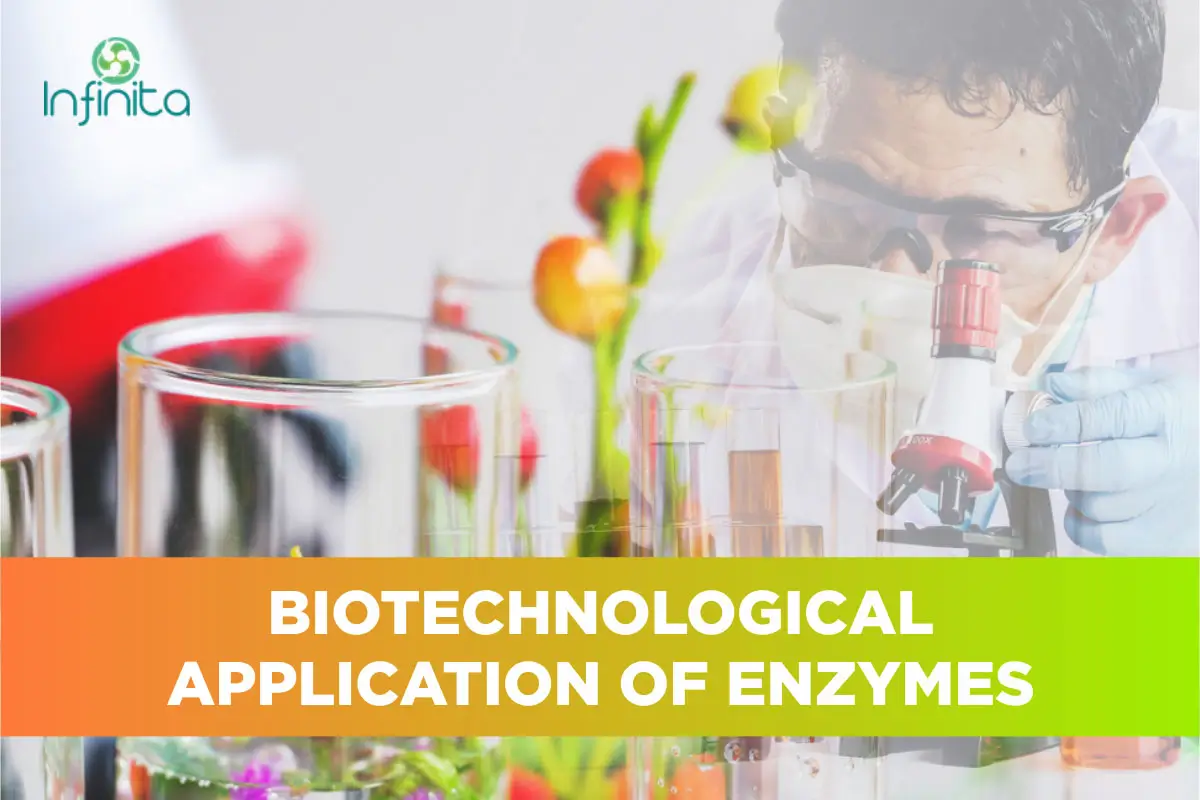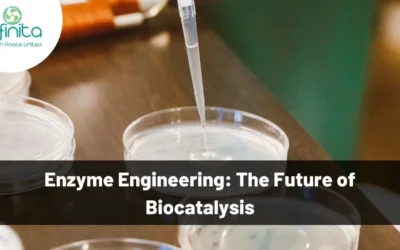Effective Bio-Technological Applications of Enzymes
Enzymes are biological catalysts (also known as biocatalysts) that speed up biochemical reactions in living organisms, and which can be extracted from cells and then used to catalyse a wide range of commercially important processes.
Biotechnology could be traced back to thousands of years ago when human started to use yeasts to make liquor. This may be the first dawn of biotechnology in food production. Along with the development of natural and social sciences, nowadays, biotechnology carries more colourful meanings.
In the modern world, biotechnology often refers to the process of making or modifying products using living systems or organisms. Besides the traditional fermentation, biotechnological tools have expanded to employ more advanced sciences, such as genetic engineering, applied immunology, and medicinal therapies and diagnostic. Among these tools, a variety of enzymes are indispensable—they may appear as hammers and chisels to help accomplish molecular biology experiments, or they may act as efficient micro-reactors in industrial production. They exist everywhere and resemble all kinds of functions in living cells or in harsh environments bearing no life. As of today, people exploit their functions in great details for better uses in biotechnology.
Enzymes in the applications of biotechnology
- Enzymes in food production
A majority of drinks and foods in our daily lives are dependent on the food production industry. The transformation of milk to cheese, grains to alcohol, fruits to juice, and flour to bread all rely on the reactions catalysed by enzymes. Because of the “green chemistry” characterised by enzymatic catalysis, these reactions can be used to produce food grade products while avoiding residues of harmful substances. As a result, using enzymatic biotechnology in food production has been rapidly developed. In addition to the superior catalytic activity, high selectivity of enzymes is another deeply admired merit. For example, maltose is a disaccharide composed of two units of glucose, which has many structurally similar isomers. Traditionally, it was almost impossible to separate maltose from its isomers, and a mixture of these isomers was used as one raw material, making quality control difficult. Now, enzymes can specifically transform each isomer to different molecules, meeting different needs in flavoring, nutrition, chemistry, and pharmaceuticals. Especially, trehalose synthase only reacts with maltose and converts it to trehalose, which is used as a food additive and biological agent.
- Enzymes in medical research
The rapid development of technologies in gene engineering allows modifications of biological activities at molecular levels. Biotechnology in medical research and agriculture becomes a busy area. Enzymes have various roles in medical research, including new drug development, disease treatment, and diagnosis or prognosis. Enzymes can also be applied to assay kits, such as coupled multi-enzyme assay kits and enzyme-linked immunosorbent assay (ELISA) kits, to conveniently conduct tests and diagnosis.
- Enzymes in new drug development
Lots of pharmaceuticals share chiral preferences; therefore, the synthesis and development of chiral molecules are the vital parts of pharmaceutical manufacture. In recent years, using enzymes becomes popular in achieving chiral resolution, instead of chemical catalysis. The enzymatic route wins this application due to high selectivity and specificity of enzymatic reactions. Optical isomers containing both R- and S- configurations are often present as the final products of chemical catalysed reactions. As a comparison, enzymes can easily yield chiral and pure molecules, and thus, solve the problem that bothers the traditional chemical synthesis for decades. Hitherto, many successful stories have already been demonstrated. For example, the pro-drug compactin is catalysed by cytochrome oxidase to form pravastatin, which is a treatment of cholesterol-related diseases.
- Enzymes in therapeutics
As enzymes are specific biological catalysts, they should make the most desirable therapeutic agents for the treatment of metabolic diseases. Although adverse immune responses may be caused by enzymes from sources foreign to the human body, the advanced techniques of genetic engineering can modify enzyme molecule to reduce or even avoid the antigenicity. A majority of enzymes are used as therapeutic agents. For example, asparaginase and glutaminase are used to treat leukaemia, collagenases are used to treat skin ulcers, and hyaluronidases are used in a heart attack therapy. In the future, there will be more potential enzyme drugs for the treatment of cancer and neurological pathology, which are considered as the next biggest health challenges in the world.
- Enzymes in diagnosis
“Diagnostic enzymes” refers to enzymes used for diagnosis or prognosis. How are enzymes used in diagnosis? Because their high specificity and sensitivity to the substrate, even in the presence of other proteins, many enzymes are already used in the diagnosis of bone diseases, cancer, and liver diseases, examples including alkaline phosphatase (ALP), acid phosphatase (ACP), and alanine transaminase (ALT). Enzymes can also be used in analysis and detection processes, such as coupled multi-enzyme reaction assays and enzyme-linked immunosorbent assays (ELISA). Due to the pivotal role in medical diagnostics, more research will be focused on these enzymes to reach clinical applications.
- Enzymes in the chemical industry
Chemical reactions often take place under harsh conditions or accompanied by intense heating and massive waste production. However, enzymatic catalysis is far milder and more efficient. Therefore, using enzymatic biotechnology in the chemical industry becomes the more recent trend. In recent years, efforts on finding new enzymes with chiral resolution capability have aroused great interests. Traditional chemical reactions often give racemic mixture products, but in most cases, only one chiral configuration is valuable, while ones are considered as impurities or even hazardous wastes. A well-known disastrous example is “Thalidomide”, which was used as a mixture of two chiral isomers. Unfortunately, one isomer has a severe adverse effect and resulted in phocomelia of the new-born, as later found by scientists. Enzymes can easily achieve chiral resolution; thus, solve the problem that is greatly challenging to the traditional chemical method.
- Enzymes in environment protection
Nowadays, environment issues grow worse and become a global concern. Scientists hope to reduce pollutions caused by petroleum and its byproduct in a clean and sustainable way. It has been found that some microorganisms have the right enzymes to degrade petroleum, break down the hydrocarbon chain to smaller fragments, which would help with cleaning oil spills and recycling waste oils. Furthermore, recent research revealed that some enzymes efficiently convert natural products such as soybean and corn oils into biofuels, which would also reduce carbon emission in the future. Enzymes can also alleviate soil and water pollution without generating new wastes. Therefore, enzymes carry researchers’ hope to keep the balance between environment and development.
Enzymes are powerful tools that help sustain a clean environment in several ways. They are utilised for environmental purposes in a number of industries including agro-food, oil, animal feed, detergent, pulp and paper, textile, leather, petroleum, and specialty chemical and biochemical industry. Enzymes also help to maintain an unpolluted environment through their use in waste management. Recombinant DNA technology, protein engineering, and rational enzyme design are the emerging areas of research pertaining to environmental applications of enzymes. The future will also see the employment of various technologies including gene shuffling, high throughput screening, and nanotechnology







